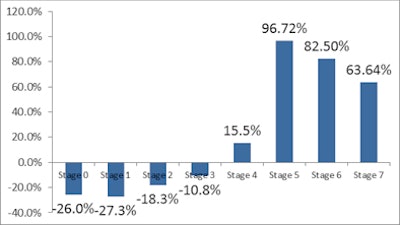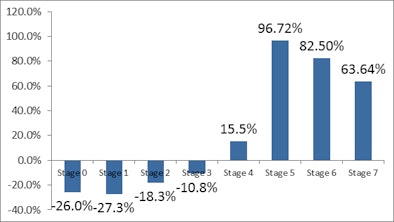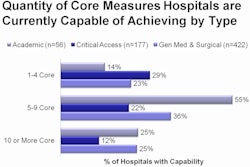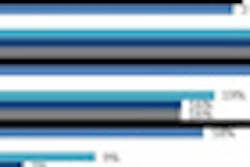
Market research firm HIMSS Analytics has reported a dramatic increase in levels of electronic health record (EHR) adoption by U.S. hospitals, correlating with the "meaningful use" financial incentive program from the U.S. Centers for Medicare and Medicaid Services (CMS).
A new analysis of the firm's Electronic Medical Record Adoption Model (EMRAM) scale reveals that in the five most recent quarters for which data are available, the number of U.S. acute care hospitals achieving the highest level of EHR adoption (stage 7) has increased 63%. The number of hospitals achieving EMRAM stage 5 or 6 has increased by more than 80%.
 |
| The graph shows sharp increases in the percentage of U.S. civilian hospitals achieving HIMSS Analytics' EMRAM stages 5, 6, and 7, beginning with the first Medicare meaningful use incentive payments in 2011, through September 2012. Image courtesy of HIMSS. |
HIMSS Analytics developed the EMRAM scale in 2005 as a way to evaluate the progress and effect of EMR system adoption by hospitals in the HIMSS Analytics database. The scale consists of eight stages representing the comprehensiveness of healthcare IT implementation.
The data, which track implementation levels from July 2011 through September 2012, show a 10% decline in the number of hospitals at the lowest stages (0 through 4). For point of comparison, during this time frame there has been little change in upward mobility by Canadian hospitals.
HIMSS Analytics believes that the dramatic increase is a result of the meaningful use program and hospitals' commitment to participate.



















